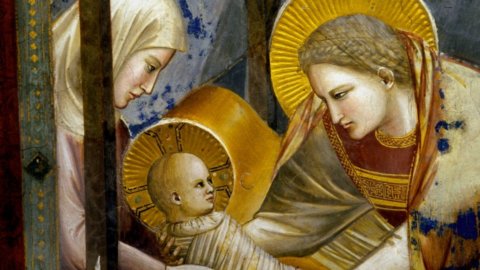The figure of St. Joseph, which the calendar celebrates today 19 March, appears above all in art with a religious theme, whose best known iconographic representation is found in "Escape to Egypt” which draws its inspiration from the Gospel of Saint Matthew. The virgin is depicted on the back of a donkey with the child in her arms, while St. Joseph holds the animal with a rope.
Many painters wanted to complete the work - adding other figures next to Giuseppe - with the intention of creating a complete scene, not of escape but of an "Sdear Family". Giotto he painted this event in the Scrovegni Chapel in Padua, inserting the midwife Salomè and three sons of Giuseppe, one of whom accompanies the donkey. At the Doria Pamphlij Gallery in Rome, we find another representation, the Virgin anticipating the donkey and then Joseph (by Annibale Carracci), we can affirm that the "theme" is developed in the way most suited to the artist and his period, always interpreting the scene with a biblical character.
Sometimes, to make the story simpler and closer to reality, they take up space in the paintings, adding streams, shepherds with flocks, and medieval architecture in the background. In the XNUMXth century, this evangelical story also took hold among the artists of Nordic painting, such as: Joachim Patinir, where the Virgin is sitting next to a large tree, while St. Joseph appears a little further away as well as the donkey.
In the XVII century, too Caravaggio, engages in this scene, a beautiful work with an angel intent on playing a violin. A work of “Botticellian” grace where St. Joseph – becomes the co-protagonist – is intent on opening the musical score – of celestial music, therefore alluding to paradise – and always the donkey in the background. The grace and sweetness of this painting give greater prominence to Joseph, no longer placed in the background, but an active part of a symbolism.
But his role in the Holy Family is however well present: in the "Adoration of the Magi"of Pinturicchio, in the'"Adoration of the Shepherds"of Ghilandaio, in the "Nativity”, but also like Joseph the Carpenter – young, old or with blond hair depicted in the “Marriage of Virgin"of Botticelli.





